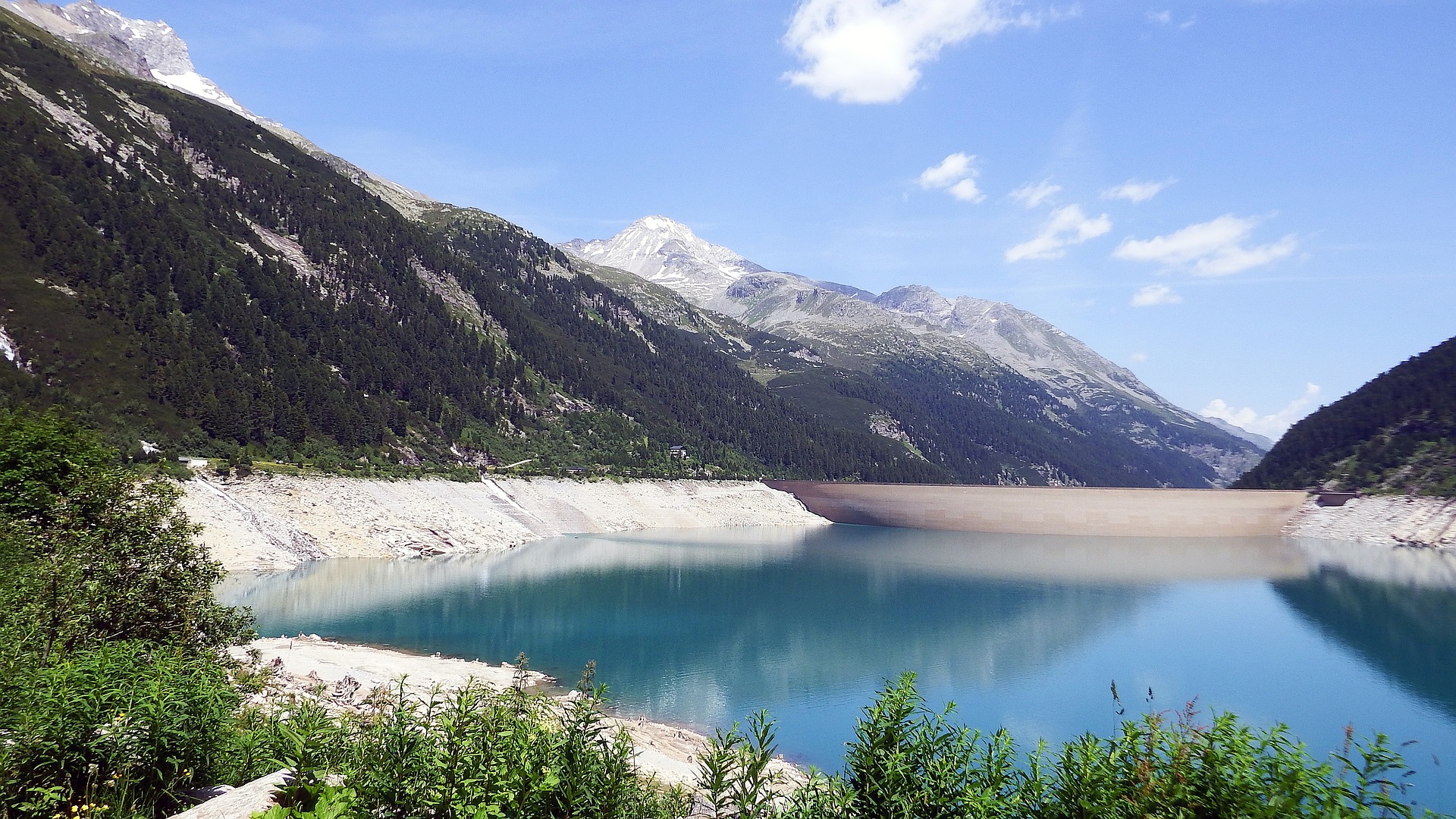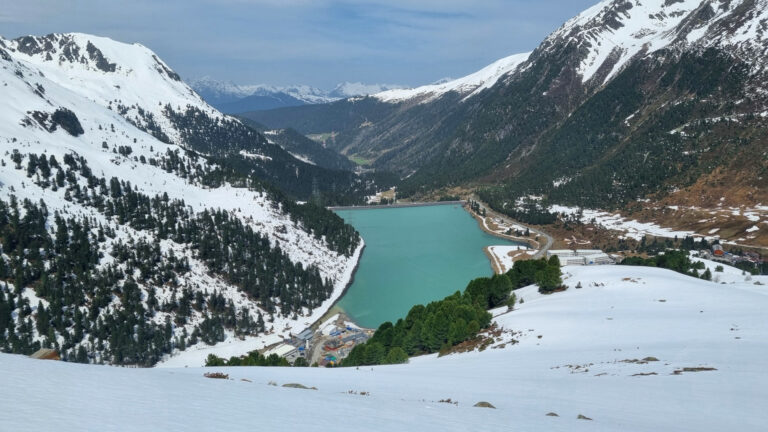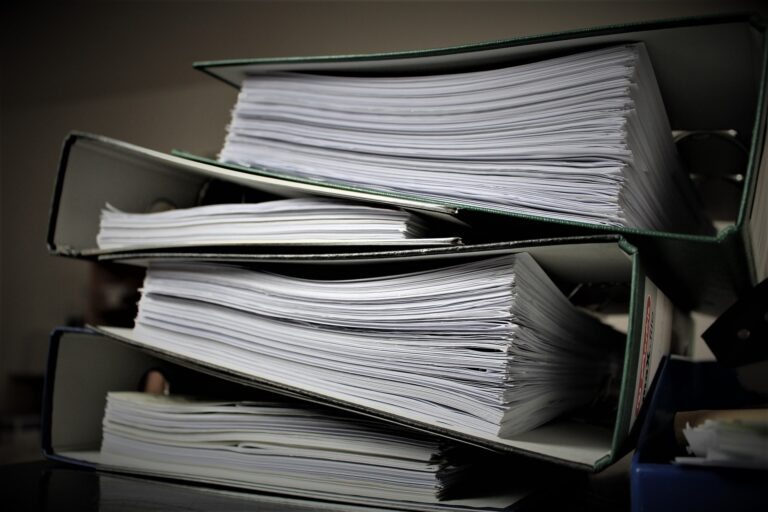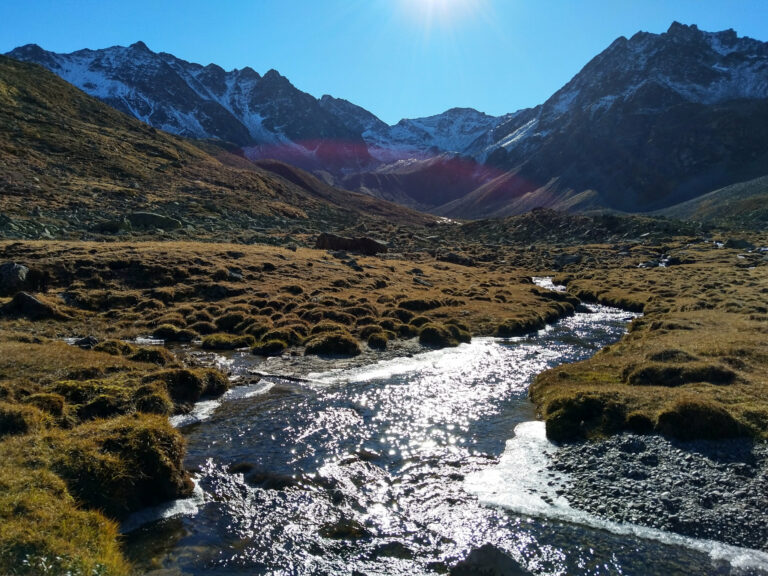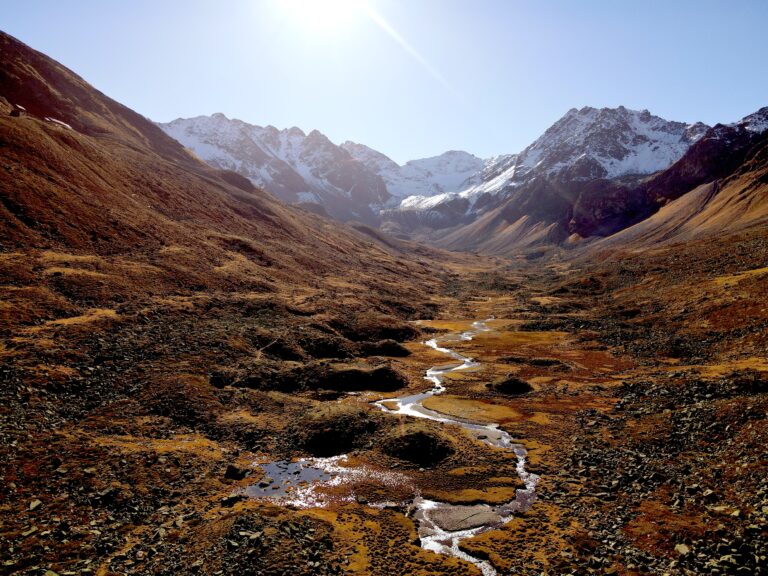Hydroelectric power is not “green energy”
Hydropower is often referred to as “clean” or “green” energy. However, it’s essential to make a clear distinction: While hydropower is indeed one of the renewable energy sources, in most cases, it is unfortunately neither environmentally friendly nor sustainable – far from being “green.” The scientific consensus now acknowledges that hydroelectric power has significant environmental impacts and should, if at all, only be used in exceptional cases and with the utmost care. Why is this the case?
Intact river landscapes benefit humans in several ways: They provide clean water, offer spaces for sports and recreation, facilitate nutrient transport, and contribute to flood protection. However, these benefits are only realized when rivers are left intact as functional ecosystems.
Yet, humans exploit rivers to their limits – using them as waterways, extracting water for irrigation or cooling in power plants and industrial processes, polluting them with wastewater and agricultural runoff, and altering their banks. Additionally, rivers serve electricity production through hydropower. Below, we’ll explain why hydropower plants with their reservoirs, diversion channels, weirs, and dams are particularly problematic.
Freshwater Ecosystems Are Hanging By A Thread
The ecosystems of rivers, streams, lakes, and wetlands are already in dire straits. They have been the hardest hit by the biodiversity crisis for years. All species dependent on intact rivers, bodies of water, and wetlands are affected. Freshwater ecosystems harbor the highest number of species in both qualitative and quantitative terms compared to other ecosystems. However, they also experience the highest rates of species loss: Since the 1970s, freshwater populations worldwide have declined by an average of 83 percent, with some species becoming extinct. For example, in the Inn River, of the once 33 fish species, only two are now common, while the rest have either become extinct or are endangered. It is therefore high time that we protect rivers and other freshwater ecosystems because it is about our water.
Rivers are Interconnected Networks
To understand why even a single hydropower plant has such significant effects on a river system, one must examine how it functions. River systems are not spatially delimited ecosystems but are in constant exchange with their surroundings—exchanging water, energy, substances, and organisms, actively and passively, upstream and downstream. Fish migrate along the river, insects and birds move between ecosystems on land and water, sediment and nutrients are transported from the mountains to the sea, deposited, and washed away again. River ecosystem networks have so much exchange with their surroundings that they are better described as networks—networks of multiple different (sub)ecosystems that are interconnected and exchange with each other. The configuration of this network and how well the individual subsystems are connected (or not) is relevant for the entire river network and for how well the river ecosystem functions. (3).
The construction of hydropower plants fragments the river ecosystem—whether through diversions, complete or partial drainage of river sections, or through dams. Regardless of how short the diversion or how small the dam, they result in sections of the river being cut off from the rest of the network, isolating habitats. The fragmentation of the network leads to a loss of quality in the entire river system, a loss of habitats, and biodiversity. Therefore, hydropower plants have impacts from the source to the sea.
Rivers Redistribute Sediment
Another important function of rivers is the transportation of sediment from the mountains to the plains and the sea. From fine sand and clay minerals to large rocks and organic material, rivers clear debris from the mountains and carry minerals into the plains.
Every structure built across a river, such as dams and weirs, slows down the flow, reduces its transport energy, and causes sediment to settle. Reservoirs therefore need to be dredged and flushed regularly. Rarely is the removed sediment returned to the river; instead, it is often used as construction material. This deprives the river of sediment, causing it to dig deeper into its bed. This often affects the groundwater level and thus directly impacts downstream settlements. Additionally, the absence of sediment at the river’s mouth affects coastal areas, leading to erosion problems as replenishment material is lacking.
In diversion channels, where water is diverted to operate turbines, the river’s transport energy is reduced, causing sediment to accumulate instead of being regularly transported away. This makes floods more dangerous because accumulated sediment is suddenly carried away during flood events.
The dynamics of sediment are also crucial for aquatic ecosystems. When disrupted, the condition of the water body deteriorates.
Hydroelectric Power Contributes To The Climate Crisis
Hydropower is still celebrated today as part of the solution to the climate crisis. However, it has been known for over 20 years that reservoirs emit greenhouse gases, which have a significant impact on the global budget.
When a valley is flooded for a reservoir, existing organic material (on the surface and in the soil) decomposes underwater, releasing greenhouse gases such as carbon dioxide (CO2), methane (CH4), and nitrous oxide (N2O). Methane has approximately 30 times the warming potential of CO2, while nitrous oxide has 300 times the potential. Worldwide, reservoirs contribute about 1.3% to human-caused greenhouse gas emissions (in CO2 equivalents). Additionally, reservoirs typically replace landscapes that previously acted as carbon sinks, such as forests or peatlands. When flooded, they can no longer absorb additional CO2. Thus, hydropower is the only renewable energy source that actively and significantly exacerbates the climate crisis.
Hydropower Kills Young Fish
Many people are aware that structures like dams and weirs in rivers disrupt or completely block the migration of fish, preventing species that need to swim upstream for reproduction from doing so. If their path is blocked by a hydropower plant, their species may face long-term extinction. While attempts are made to counteract this with fish ladders, research shows that these are often very ineffective. Moreover, a fish ladder only addresses the continuity for one species at best. However, the river ecosystem consists of countless communities of life, including fish species, insects, algae, bacteria, and more, and continuity is still disrupted for all of these.
Additionally, and this is not widely known, the operational mode of most hydropower plants actively kills young fish through a phenomenon called “spill and drawdown.”
Spill and drawdown refers to the rapid rise and fall of water levels in the riverbed, much faster than would occur naturally. It is caused by both planned and unplanned flushing operations at water intakes (planned flushing is for cleaning sediment from the facilities, while unplanned flushing can occur, for example, during accidents). Additionally, reservoir-based power plants are turned on and off as needed, typically when electricity prices are highest. Water then rushes out of the reservoir through pipes to the turbine in the power plant and is then discharged back into the river, causing sudden surges known as spill waves.
This happens not infrequently but often several times a day. Riverbanks, gravel bars, and shallow sections are flooded or dried out within minutes. Aquatic organisms are subjected to stressful fluctuations in water level and temperature. The flood waves can also pose a danger to humans, but for young fish, they are deadly. During the flood, the current is too strong for them, so they seek refuge in the shallower areas of the river where the current is weaker. However, when the water level suddenly drops again, they cannot return to the deeper areas in time and die agonizingly in the dried-up shore zones.
‘Green’ Alternatives?
Every form of energy generation has some degree of problems—there is no inexhaustible, clean, unconditionally ‘green’ energy generation as of yet. However, compared to all other renewable energy sources, the negative impacts of hydropower on the environment are significantly higher. While hydropower is often mentioned in the same breath as wind and solar energy, from an ecological perspective, they couldn’t be further apart. Compared to hydropower, the negative environmental impacts of solar and wind energy are significantly smaller and geographically limited. Additionally, they are much cheaper and quicker to build. Hydropower is rarely the most sensible or cleanest solution but often the most profitable, as it is doubly and triply profitable:
- Hydropower is often subsidized as ‘sustainable’ energy.
- In pumped storage facilities, electricity from any source—such as coal—is fed in and greenwashed, then sold at a higher price as ‘green’ electricity.
- Unlike wind and solar, hydropower plants can be switched on and off within minutes. This allows direct response to market electricity prices, generating and selling electricity at peak prices.
This has led to a gold rush in hydropower construction, bringing us to where we stand today: the level of hydropower development worldwide and also in Tirol is much too high. River ecosystems are the most stressed and overused ecosystems globally, with freshwater species being the most threatened by extinction. In Tirol alone, there are over 1000 hydropower plants, and hardly a stream or river remains untouched, with most having several hydropower plants. What was originally considered an ideal solution on the path to the energy transition has become a more destructive and often inefficient form of energy generation that penetrates even the last corners of untouched wilderness. The climate crisis and biodiversity crisis cannot be viewed separately—and the energy transition must be implemented as ecologically compatible as possible. Hydropower is the only renewable energy that not only destroys nature massively but actively contributes to both species extinction and the climate crisis.
Hydropower is dirty—and certainly not inherently ‘green’ energy.
References & Links
- https://www.wwf.at/das-schuetzen-wir/bedrohte-arten/living-planet-report-2022/
- https://www.wwf.at/neue-fische-fuer-den-inn/
- SINGER, Gabriel, Flussnetzwerke. Podcast Zeit für Wissenschaft ZfW_050 Universität Innsbruck, 2021. https://www.uibk.ac.at/podcast/zeit/sendungen/zfw050.html
- https://www.igb-berlin.de/sites/default/files/media-files/download-files/memorandum_klimaschutz_vs_biodiversitaet.pdf
- https://www.spektrum.de/news/wasserkraft-das-sterben-der-stauseen/1969555
- DEEMER, Bridget R. et. al., Greenhouse Gas Emissions from Reservoir Water Surfaces: A New Global Synthesis. BioScience, Volume 66, Issue 11, 1 November 2016, Pages 949–964, https://doi.org/10.1093/biosci/biw117
- https://www.wwf.at/neue-studie-schwallbetrieb-der-wasserkraft-verstoesst-gegen-tierschutzgesetz/
Cover photo: Schlegeis Dam

